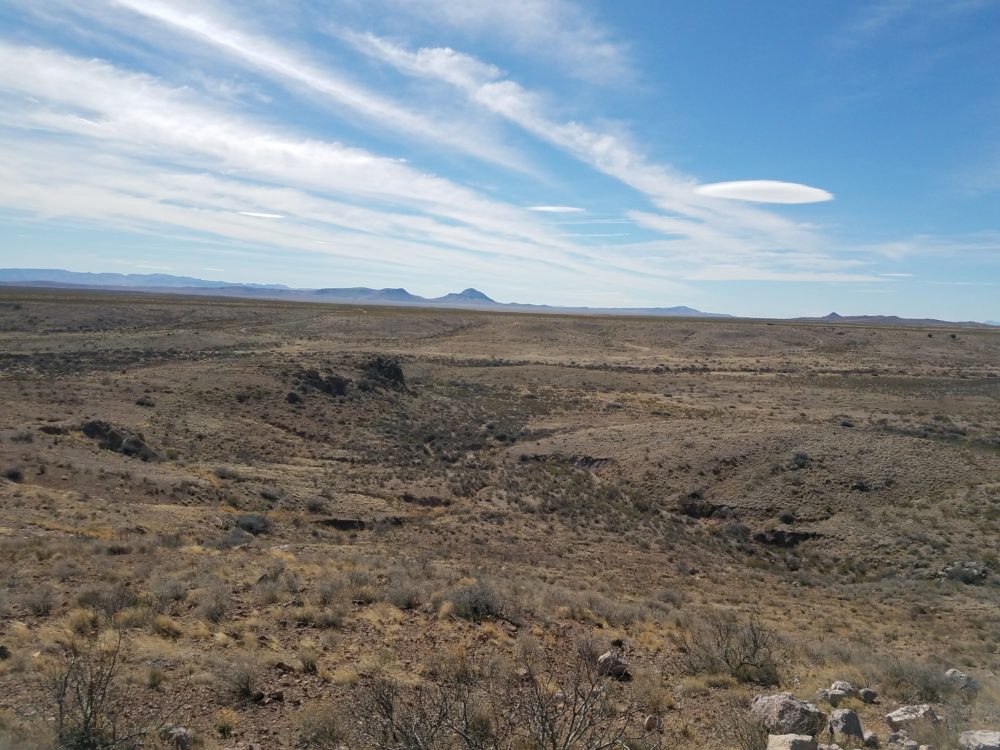After calling the State Historian’s office, I gained a bit of insight on the happenings in State Historic Site Landia.
El Camino Real Historic Trail:
First, there used to be a seventh historic site: El Camino Real Historic Trail Site. According to Deputy Historian Rob Martinez, the site recently closed because it was not making enough money from visitors to sustain itself. The state pays for a portion of the historic sites, but on some level, they need to maintain a percentage of their revenue. Since the trail was located a substantial distance from the highway, few visitors ventured out there.
What strikes me as interesting about this historic site is precisely what I saw in the others. Although it was a trading trail for indigenous groups before the Spanish commandeered it, The Department of Cultural Affairs still markets it with primarily Spanish Centric history–at least on the website: “Using a series of Native American footpaths used for trade between the indigenous people of Tenochititlán/Mexico City and Chaco, Spanish explorer Juan de Oñate “blazed” the northern portion of the trail into what is now New Mexico in 1598, and claimed the land for Spain.” The structure of the sentence alone subordinates the native history of the trail and gives privilege to Oñate with his exploration of a trail that was already well known.
We see this again in following paragraphs about the trail:
Discover the indigenous people encountered by the Spanish and the impact the arrival of the Spanish had on the formation of New Mexico. Remnants of the early journey remain today in hand-hewn carts, tools, leather water jugs, and religious altars and objects that accompanied the travelers into the northern territory.
Of course, given the charming nature of Oñate, we can expect the “encounter” was peaceable (that is sarcasm). In fact, Oñate is infamous for his unnecessary brutality against the natives. But the page fails to acknowledge the truth about history. It is an erasure of what happened–the same kind of eraser I saw in my history classes growing up. And while I cannot say that history has an ethicality or morality, certainly, the pieces left out here affect the Truth.
I am told that the visitor center is closed, but much of the trail is still accessible, including the plaques that accompany the historic site. Therefore, I would like to visit it over the next few weeks to discover if the onsite history is as bias as the website. I’ve already sent an email to request a tour. Wish me luck!
The Taylor Family Monument:
Martinez also informed me that the state is looking to acquire an additional historic site: The Taylor Family Monument. As of right now, the monument is still a family home and not open to the public. However, it is willed to the state once its current owner passes away. There seems to be at least some confusion about the historic site, the website owned by the Friends of the Taylor Family claim “The official dedication of the Taylor-Barela-Reynolds-Mesilla Historic Site (TBRM) took place in September 2006. As one of New Mexico’s eight Historic Sites, TBRM joins a special collection of culturally significant places. Each historic site tells a unique story that is important to understanding New Mexico history.” Another question to ask: Is it officially a historic site or not? If so, who decided?
Regardless, The home represents an important part of New Mexican history.
The Taylor home and two adjoining stores tell the story of settlement in the Mesilla Valley and a time when Mesilla was the center of political, commercial, and social activity in southern New Mexico. Events associated with the monument’s history include: the U.S. War with Mexico, the Treaty of Guadalupe-Hidalgo, and the Gadsden Purchase; the Confederate attempt to invade New Mexico during the Civil War; operation of the Butterfield Overland Mail Trail and Camino Real trade routes; and arrival of the railroad in New Mexico.
Without argument, the home is a symbol of the colonialism–but not Spanish colonialism like other historic sites. Instead, it represents American Colonialism. A war the United States provoked to gain land, a “treaty” which gave Mexicans living in the border states the “decision” to relocate or assimilate, and a resettling of borders in favor of building rail lines for the US. After All, these periods are what gained New Mexico statehood status.
While it is important to recognize–maybe even celebrate–the annexation of New Mexican territory, we cannot do so without acknowledging the physical and emotional displacement of the people who already lived here. The descriptions on the website fail to mention the people already living here when these pioneers settled in the Mesilla Valley in the 1850s. Furthermore, I am concerned about why we may have another state Historic Site, or perhaps we are acquiring another state historic site that represents the same populations and stakeholders already represented in the other 6.5 sites. Where is the representation of the Natives–both indigenous and Mexican?
